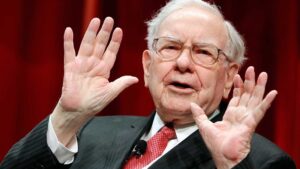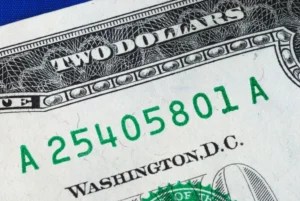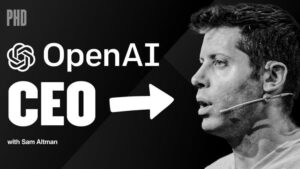
The Sage of Omaha, legendary chairman of Berkshire Hathaway, has been selling stocks and now sits on an enormous pile of cash, $325 billion by last count.
In the past Buffett said he didn’t understand tech stocks. But he bought Apple. Now he’s even selling that.
You can deride him, say “he’s an old man,” and indeed at 93 he is very old. He lost his wingman, Charlie Munger, a year ago, at age 99. Maybe it’s estate planning.
Or maybe he knows something.
What Buffett Knows

You could do this in the 1950s, when he started investing. Every public company published its assets and liabilities, its sales and its costs. You could calculate its net margins, see its market advantages up close.
In Buffett’s era, assets were real. Oil is a physical asset. A factory is a physical asset. An electrical network is a physical asset. So is a railroad. So is land.
Not all tech assets can be quantified in that way. Apple is an exception, in that iPhones are real products. You can hold one in your hand. Then you can trace its costs through Apple’s income statement, calculate sales, and measure profit, in a straightforward manner.
Buffett has a long-time relationship with Microsoft co-founder Bill Gates, but he never invested heavily in Microsoft. That’s not just because he’d feel like an insider if he did so. It’s because Microsoft “licenses” software, which by its nature is ephemeral. How has it become more valuable as its distribution costs fell to zero, he might ask, shaking his head at the answer.
Real Assets vs. Unreal Assets

Cloud values are built with operating cash flow. You can measure a cloud company’s value by looking at how much money is coming in, against how much money is being spent. A tech company may appear to be losing money, because of its debt load or the depreciation of its long-term assets. But if its operating cash flow is positive, its value is high.
Many companies use a “cheat code” to appear more valuable. This is Earnings Before Income Taxes, Depreciation, and Amortization (EBITDA). Potential acquirers use EBITDA to measure the value of potential investments, knowing that taxes and depreciation are numbers that can be fudged with accounting.
In the cloud era, from 2009 to 2022, the most valuable companies were those with the greatest operating cash flow. Amazon.Com put its cash flow statement first in its quarterly reports, not its balance sheet, because that’s how it managed itself. Operating cash flow can be spent on new equipment, it can be invested in the business.
Value investors like Buffett look at free cash flow, the money available to shareholders after all costs are accounted for, including capital spending. A decade ago, they argued with me that Amazon couldn’t be worth what the market said, not really, because it lacked free cash flow that could go to dividends, that could go back to the investors.
But operating cash flow is real. You can calculate real value based upon it. You can argue about that in the market, and the result of the argument is a stock price. Multiply the stock price by the number of shares outstanding and you get a market capitalization.
That’s real, isn’t it?
Market Cap Built on Sand

You can’t seize Amazon, sell its assets, and have anything left. Its value, and that of all tech companies, is based on market cap. Operating cash flow means you know something of its value as it operates, but its intrinsic value is still greater than the sum of the whole.
This brings us to AI.
How do we come up with a value for OpenAI, or Grok, or Claude, or Perplexity? Not only do they have few assets, but they lack positive cash flow. In fact, they’re privately held. You can’t look at the books from the outside.
You’re guessing at a valuation. It’s a huge game of Liar’s Poker. The original game originated at brokerages like Solomon Brothers, and involved blind betting based on the serial numbers of $100 bills.
But venture capitalists play a similar game all the time, talking about the market cap of their investments. They sell stock to investors based on value pulled out of thin air. A funding “round” may sell 20% of a company based on a total value of $1 billion, and the next round may base the sale on a value of $10 billion. But that value isn’t based on assets, on sales, or even on cash flow. The value is built on sand.
When investors don’t want to play the game, a private company might go through a “down round.” This is what happened at WeWork. New money is raised based on a valuation lower than in the previous round. I put in $100 million to buy 10% of a $1 billion company, but the new round values it at $500 million. I’ve lost money.
A World Based on Sand

Since the launch of OpenAI two years ago, the value of clouds depends on this sand. Cloud companies like Meta report record earnings because of “strong AI growth.” But how much of that money comes from companies that have earnings, or at least cash flow? How much comes from companies that are just spending down their equity?
OpenAI says it will lose $14 billion in 2026, three times more than it’s losing now. But its most recent cash raise sets its value at $157 billion.

Yet these kinds of calculations from venture capitalists are what our entire economy is now based on. Clouds are collecting investors’ money, putting that money into capital spending, and hoping for a good result down the road.
The whole world economy is now based on this hope. The value of America’s stock market is increasingly based on this sand of hope.
What if this hope is misplaced?









